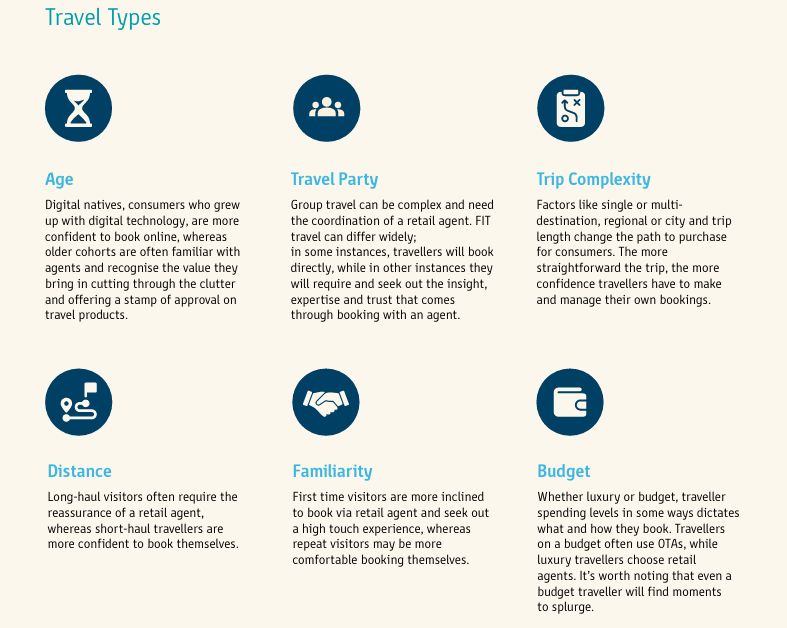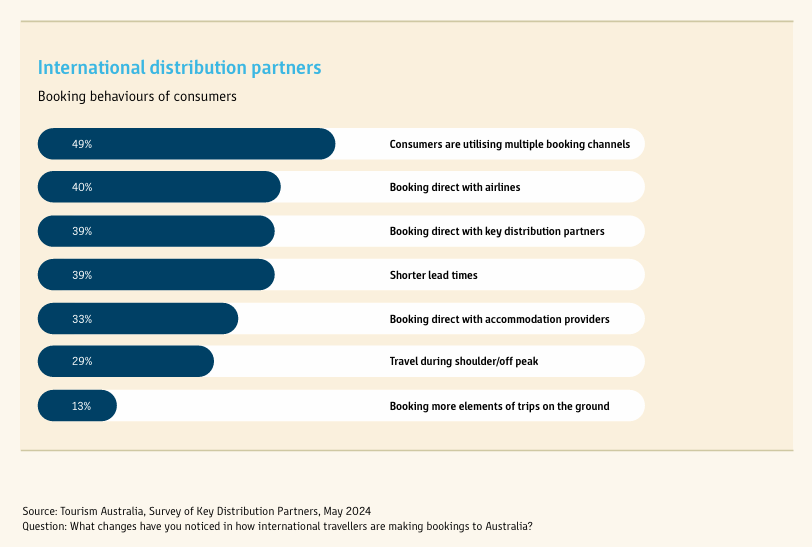The Future of Distribution Insights Report 2024: Key Insights for Tourism Operators
Tourism Australia recently published the Future of Distribution research, shedding light on key trends shaping the global travel distribution landscape. SATSA was involved in this initiative through our participation in the Global Inbound Tourism Alliance, a collaboration of inbound associations from Australia, New Zealand, the USA, Ireland, the UK, and Europe. As founding members of this initiative, alongside Peter Shelley, Managing Director of the Australian Tourism Export Council (ATEC), we are committed to driving meaningful discussions and strategies that support the inbound tourism sector.
The travel distribution landscape is evolving rapidly, bringing both challenges and opportunities for tourism operators. As inbound tourism continues its post-pandemic recovery, understanding the shifts in consumer behaviour, technological advancements, and distribution strategies is crucial.
The Future of Distribution Report 2024 highlights key trends shaping the industry. Here’s what you need to know to stay ahead:
1. The Changing Face of Travel Distribution
The industry is simultaneously experiencing consolidation and fragmentation, making it more complex than ever.
Direct bookings with airlines and hotels are increasing, fuelled by loyalty programmes and enhanced digital experiences. However, travel agents remain essential for complex and high-value itineraries.
Social commerce is emerging as a powerful tool, allowing bookings directly within platforms where travellers engage with influencers and curated content.
2. Travellers Expect More Than Ever Before
Today’s travellers have heightened expectations. They want:
- Personalisation: Travel experiences tailored to their interests, values, and preferences.
- Control & Transparency: Real-time pricing, flexible booking options, and the ability to modify reservations easily.
- Trust & Security: Credible partnerships, secure transactions, and reliable customer reviews are essential to building consumer confidence.

3. The Role of Technology in Shaping Distribution
Artificial Intelligence (AI) is revolutionising the travel space, enabling greater personalisation, dynamic pricing, and streamlined operations.
Dynamic pricing models allow businesses to adjust rates based on demand, competition, and market conditions.
Smaller operators can leverage SaaS platforms to enhance their online presence and compete with industry giants.
4. Key Takeaways for Tourism Operators
To remain competitive, tourism businesses should:
- Diversify their distribution strategy, ensuring visibility across multiple channels including social media, direct bookings, and third-party distributors.
- Invest in technology to streamline operations, improve customer engagement, and deliver personalised experiences.
- Strengthen partnerships with trusted distributors to maximise reach and enhance credibility.
- Adopt flexible booking policies, offering transparency and risk-free transactions to meet consumer demand.

5. How to Navigate the Future of Travel Distribution
With new players entering the market and technology reshaping consumer behaviour, it’s critical for operators to rethink their sales and marketing strategies. Understanding the changing travel ecosystem will enable businesses to refine their offerings, meet traveller expectations, and drive long-term success.
This report is a valuable resource for our members, helping them navigate the complexities of today’s travel landscape.
To explore the full insights, access the complete report here.
























